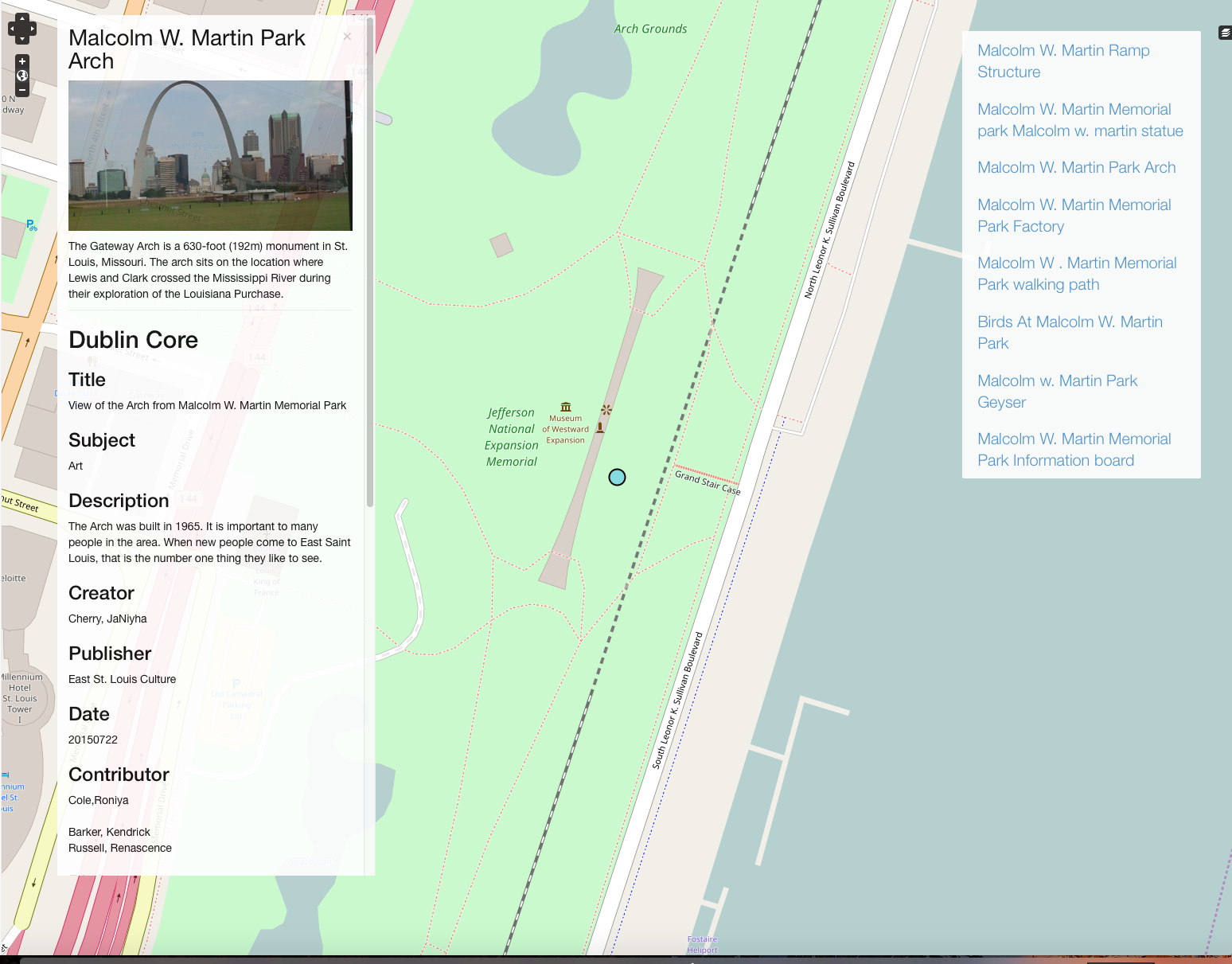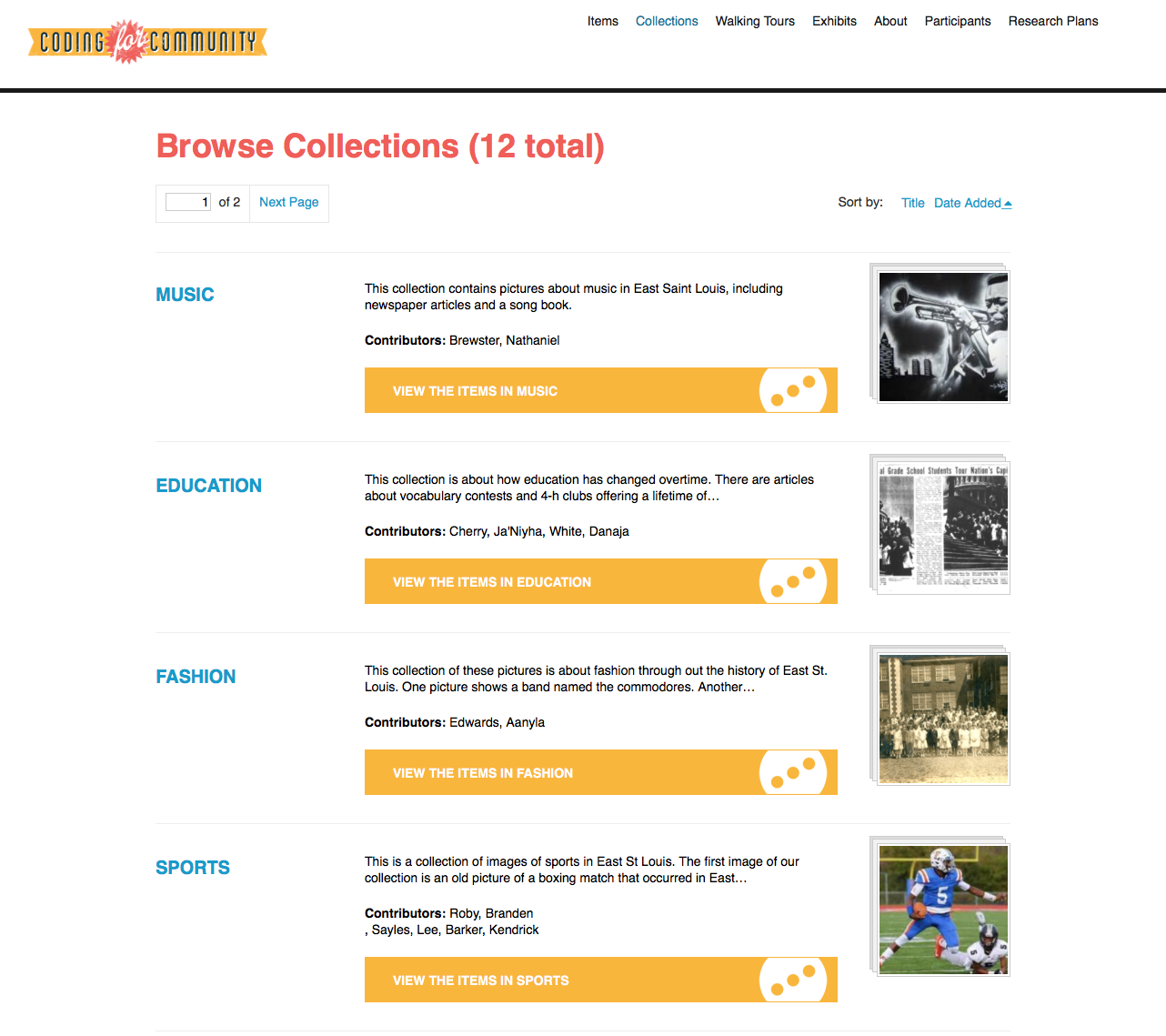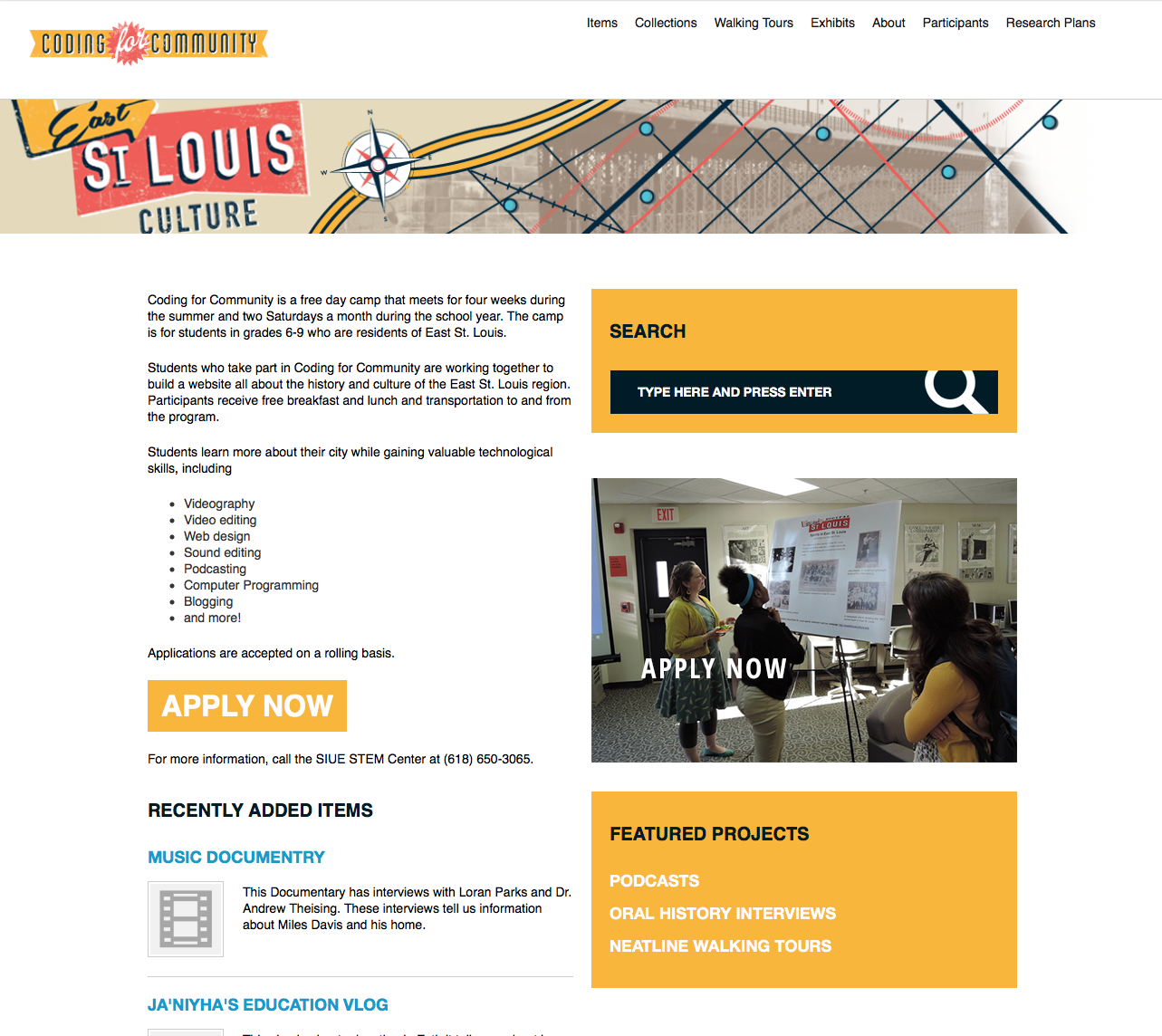Digital East St. Louis
Abstract
Digital East St. Louis, funded by a three-year National Science Foundation ITEST grant, is a collaboration between the STEM Center and the IRIS Center for the Digital Humanities at Southern Illinois University Edwardsville. Faculty in English and History who specialize in the digital humanities work alongside middle school teachers to develop a comprehensive three-year summer and after-school program for a group of middle school students. The research component of Digital East St. Louis is assessing how a digital humanities, place-based approach inspires student interest in the computer sciences. Over the three-year program, which launched in the summer of 2015, students have built a comprehensive database and a content-rich digital map showcasing their research into the history and culture of the city and its inhabitants.With Sharon Locke, Howard Rambsy, Matthew Johnson, and Liza Cummings
Digital East St. Louis, a project supported by a National Science Foundation ITEST grant, is a collaboration between Southern Illinois University’s STEM Center and the IRIS Center for the Digital Humanities to design programming that encourages newfound interest in technology via a place-based approach to the digital humanities. I serve as the project’s curriculum director, alongside STEM’s Instructional Designer Matthew Johnson and English Professor Howard Rambsy.

The informal educational program provides participants in grades six - nine in real life (IRL) experiences as they tell the stories of their city. East St. Louis, Illinois, and its surrounding towns are located on the American Bottoms, a flood plain directly across the Mississippi River from St. Louis. East St. Louis was a bustling site of industry and culture, but the city has suffered from white flight, the exodus of job-creating businesses, and pollution. Digital East St. Louis participants, however, think the city has a different story to tell, involving the jazz trumpet of Miles Davis, the dance technique of Katherine Dunham, and a tight-knit community that comes together for football games and arts performances. One participant explained, “People think that East St. Louis is a bad place and that there’s nothing here, but I like the project because we get to show people who don’t live here that there’s more happening than just the bad things they hear about.”
Participants have recorded oral histories of residents at the Community Center. They have compared images of the city’s parks in virtual walking tours and filmed documentaries about its best restaurants. They used Google My Maps to map their finds from soil and water testing and used iNaturalist to record biodiversity in the area’s state park. The content drives student interest and digital skills follow. They contextualize content on an Omeka archive. Along the way, students have learned about metadata, the basics of GIS, web design, and how to record and edit sound and video.

The key to Digital East St. Louis is that process, rather than product, becomes the primary site for community engagement. Rhetoric about digital spaces often describes them as removed-from-the-world places we go to to while away hours and siphon our ability to interact civilly and intimately. I’ve tried to counter this perception in the design of digital projects so that as content creators, participants engage with the community they seek to represent. In Coding for Community, participants leave their comfort zones to talk to new people about the city’s past and its future, explore neighborhoods on foot, and delve into old postcards and letters. As they do so, they have a greater sense of their digital audiences and the story they hope to share with them. In this way, the project participants have come to see they have some agency in reframing the narratives that circulate about their city and that they can have a meaningful impact on its inhabitants.

